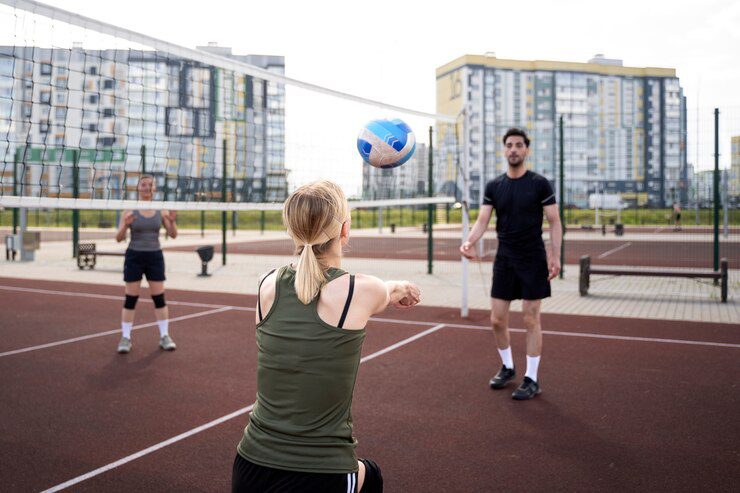Basketball, a high-intensity sport demanding a blend of skill, agility, and endurance, requires players to be at their peak physical condition. Effective basketball conditioning is not just about running laps; it’s a strategic approach to enhance players’ stamina, strength, and overall performance on the court. In this guide, we will explore key strategies to elevate your game through comprehensive basketball conditioning.
Cardiovascular Endurance
At the core of effective basketball conditioning lies cardiovascular endurance. The sport demands constant movement, rapid sprints, and sudden directional changes. Incorporating aerobic exercises such as running, cycling, or jump roping into training routines helps improve stamina building. Interval training, involving short bursts of high-intensity activities followed by brief rest periods, mirrors the stop-and-start nature of basketball and is particularly beneficial for conditioning.
Agility and Quickness
Basketball is a game of swift movements and rapid changes in direction. Agility drills focusing on lateral movements, cone drills, and ladder exercises enhance players’ ability to maneuver through opponents with speed and precision. Developing quick footwork through specific drills not only improves defensive capabilities but also sharpens offensive strategies, making players more unpredictable and challenging to guard.
Strength Training
While endurance and agility are crucial, strength forms the foundation of basketball conditioning. Strength training exercises, including weightlifting, bodyweight exercises, and resistance training, help build muscle power essential for explosive movements like jumps and sprints. Targeting major muscle groups, particularly the legs, core, and upper body, contributes to improved overall performance on the court.
Plyometric Exercises
Plyometrics focuses on explosive, powerful movements, making it a valuable component of basketball conditioning. Box jumps, depth jumps, and bounding exercises enhance a player’s ability to generate force quickly. Plyometric training not only improves vertical leap for rebounds and shots but also contributes to overall agility, vital for outmaneuvering opponents.
Flexibility and Mobility
Basketball requires a wide range of motion, from quick turns to high jumps. Incorporating dynamic stretching and mobility exercises into the conditioning routine helps prevent injuries and improves overall performance. Yoga and Pilates can also be beneficial in enhancing flexibility, balance, and core strength, contributing to a well-rounded conditioning program.
Sport-Specific Drills
Conditioning should replicate the demands of the sport. Sport-specific drills simulate game scenarios, combining physical conditioning with skill development. These drills not only improve fitness training levels but also enhance basketball-specific skills, such as dribbling under pressure, making quick decisions, and executing precise passes.
Mental Conditioning
Basketball is as much a mental game as it is physical. Mental conditioning involves building focus, resilience, and strategic thinking. Visualization exercises, mindfulness, and simulated pressure situations in training help players develop the mental fortitude required during intense game situations. A strong mind contributes to better decision-making, composure, and resilience during a match.
Proper Nutrition and Hydration
Effective basketball conditioning goes beyond the court; it involves maintaining a healthy lifestyle. Proper nutrition and hydration are integral components. A balanced diet rich in carbohydrates, proteins, and essential nutrients supports energy levels and recovery. Hydration is paramount, as even mild dehydration can impact performance. Players should pay attention to pre-game meals, stay hydrated during matches, and focus on post-game recovery nutrition.
Read More: Do Americans follow any sports from outside the US? If so, which ones
Rest and Recovery
Conditioning is not solely about pushing the body to its limits; adequate rest and recovery are equally crucial. Overtraining can lead to fatigue, decreased performance, and an increased risk of injuries. Proper sleep, active recovery sessions, and rest days within the training schedule ensure that the body has time to repair and adapt to the demands of conditioning.
Consistent Monitoring and Adjustments
Basketball conditioning is an evolving process. Regular assessment of fitness levels, performance metrics, and feedback from players allows coaches to tailor conditioning programs for optimal results. Adjustments in intensity, volume, and drills can be made based on individual player needs and the team’s overall objectives.
Conclusion
Elevating your game in basketball requires a holistic approach to conditioning. From cardiovascular endurance to mental resilience, each aspect plays a vital role in enhancing performance on the court. By incorporating a well-rounded conditioning program that includes strength training, agility drills, sport-specific exercises, and a focus on mental fortitude, players can not only meet the physical demands of the game but also outshine their opponents. Consistency, adaptation and a commitment to overall well-being form the pillars of effective basketball conditioning, ensuring that players are not only fit but also ready to face the challenges of competitive play.







